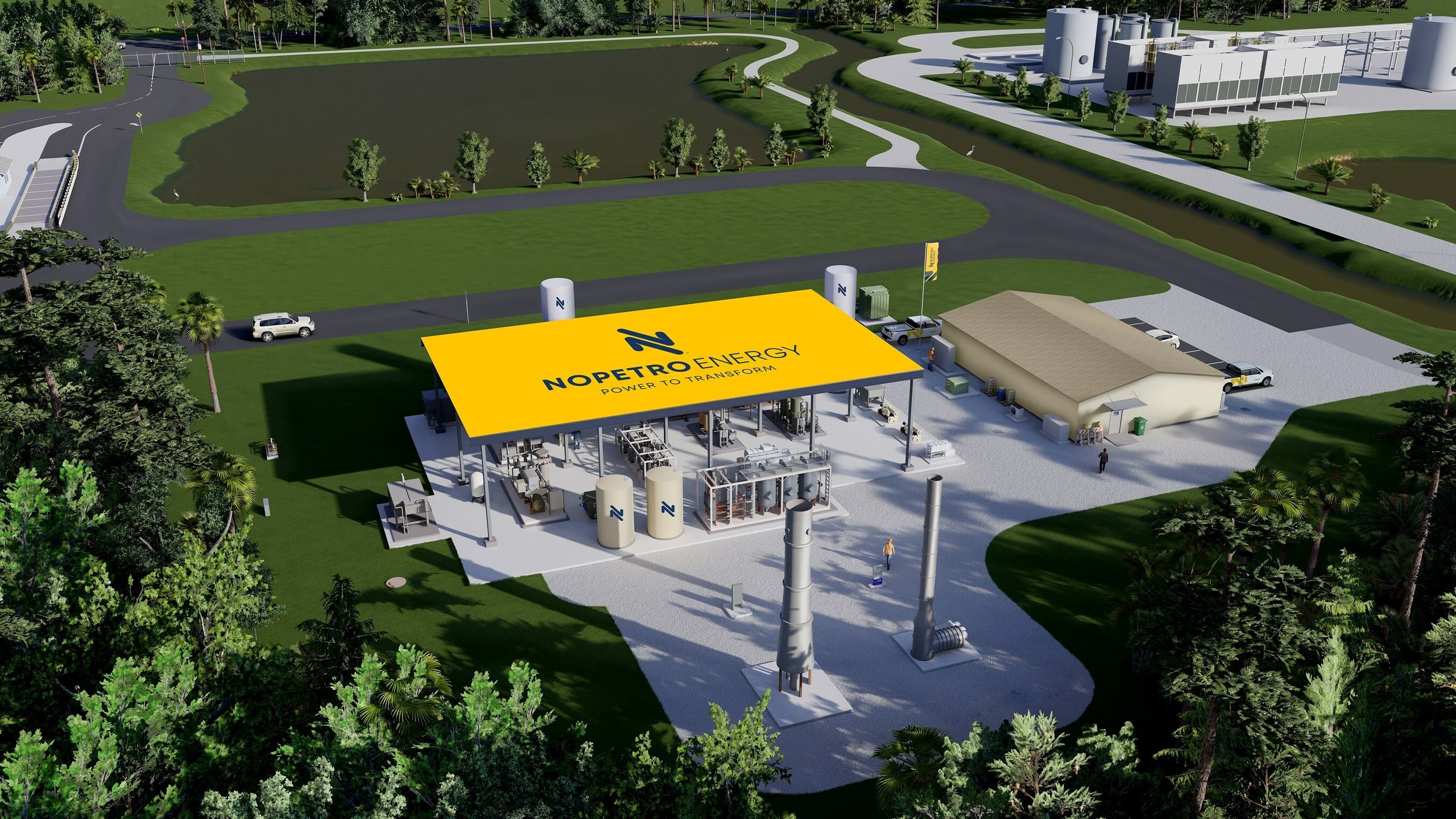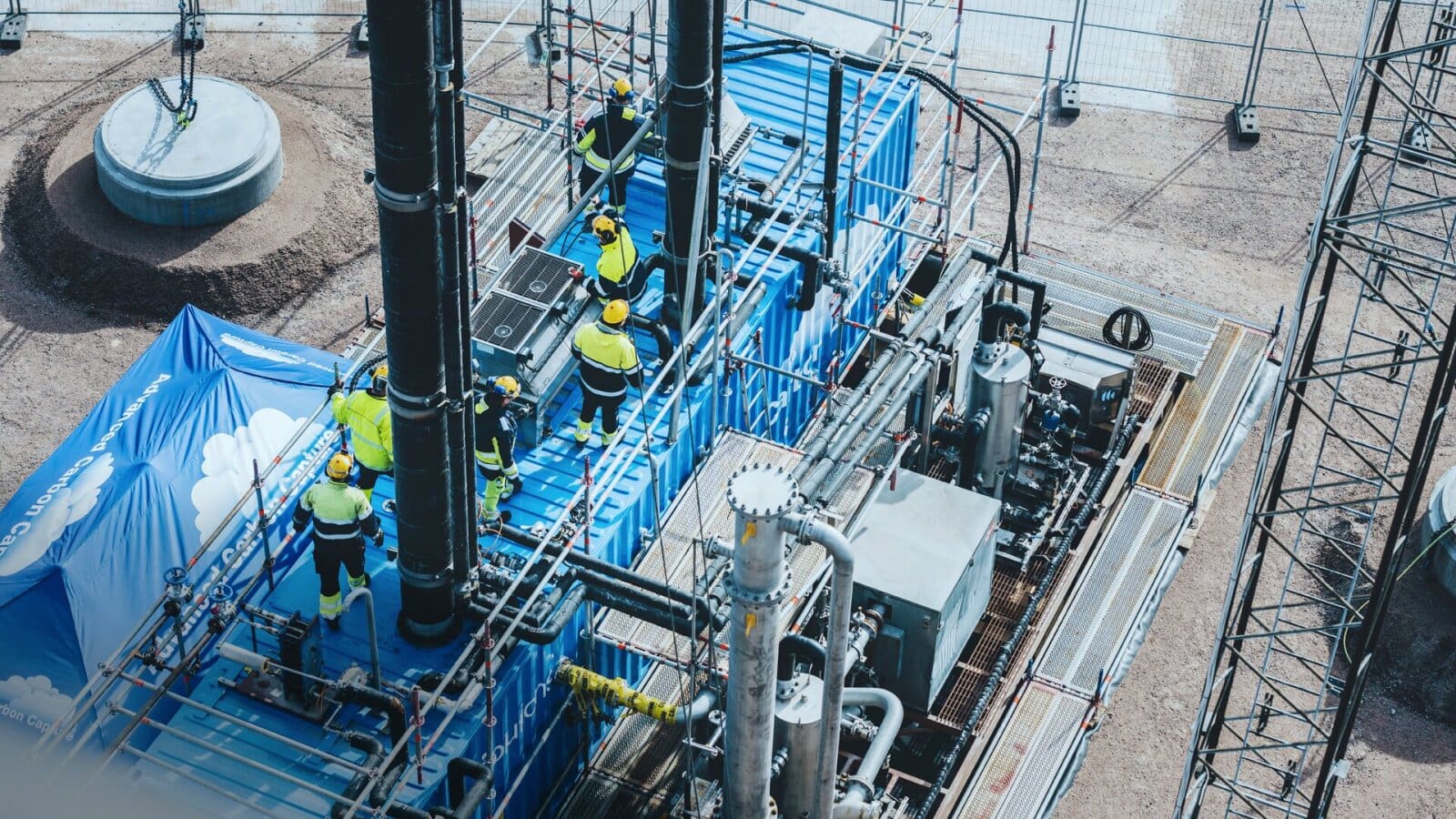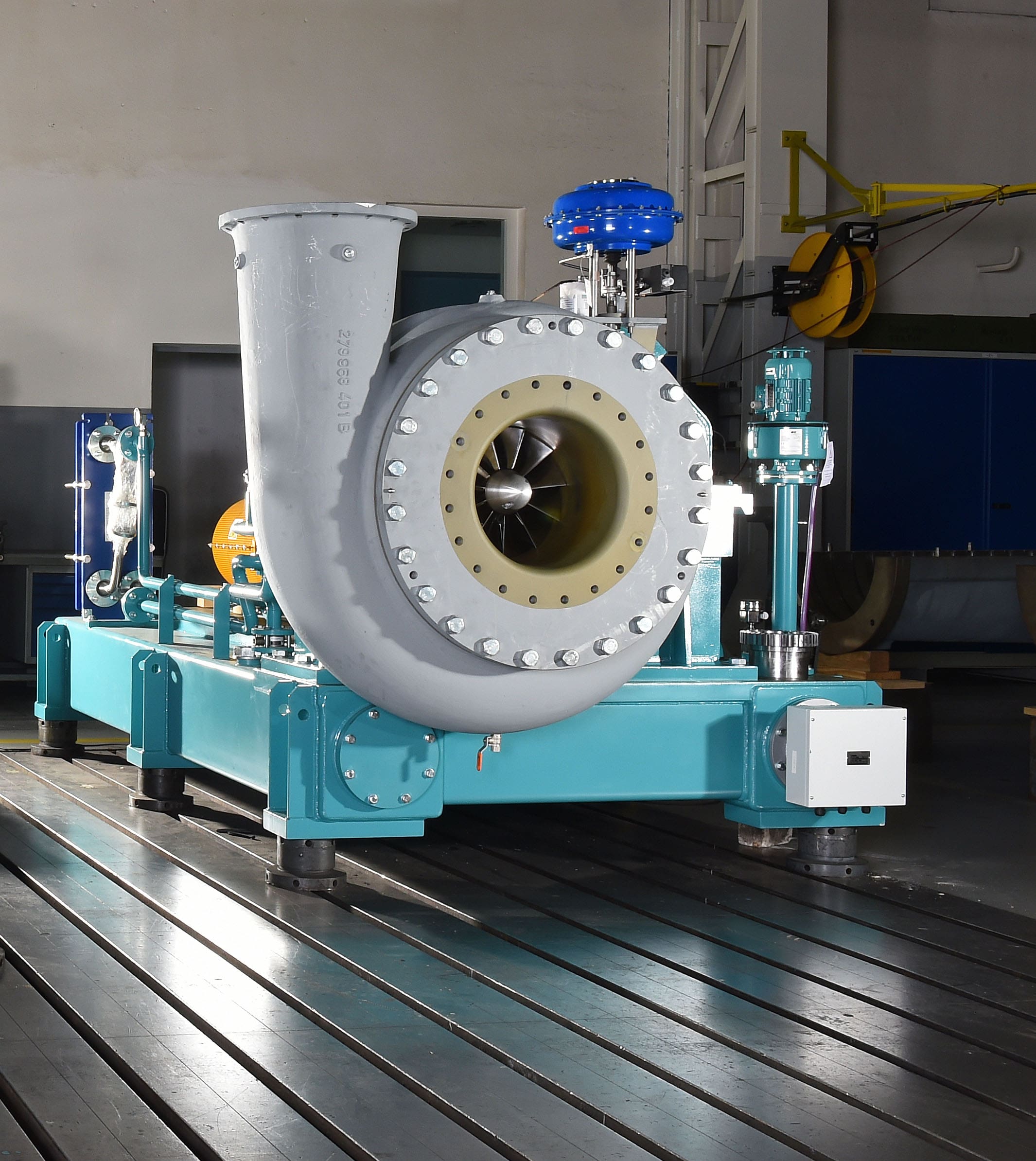This article has been written by Ejolle Lovert Epie and Daniel Foelber.
Concentrated along the equator, Earth’s rainforests are densely packed with vibrant biodiversity and unique ecosystems that act as the lifeblood for local and indigenous inhabitants. But the Congo Basin Rainforest (Congo Rainforest) is arguably the single most important rainforest in the world in terms of relative impact.
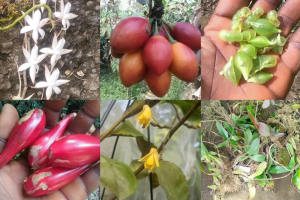
Unlike other rainforests that are surrounded by rich natural resources, the Congo Rainforest exists as an oasis amid arid landscapes with far less vegetation and water. More than 30% of the Congo Rainforest’s plants are considered native to the region. The rainforest’s canopy provides a protective layer above the water, soil, plants, and animals that have existed there for countless generations. Elephant trumpets, gorilla belches, okapi chuffs, chimpanzee laughs, leopard growls, and lion roars can all be heard throughout the forests, rivers, swamps, and savannahs.
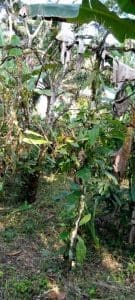
For more than 50,000 years, the rainforest has provided shelter for humans. Today, more than 75 million people call the Congo Rainforest their home. The sheer vitality of the rainforest ripples throughout Central Africa, and in many ways, the entire continent. It is for these reasons that the Congo Rainforest acts as the lungs of Central Africa, inhaling vast amounts of carbon and exhaling the oxygen needed to support life.
Life On A Grand Scale
The Congo Rainforest occupies the countries of Cameroon, Gabon, Democratic Republic of the Congo (DRC), Republic of the Congo (Congo), Equatorial Guinea, and Central African Republic (CAR).
The forest’s total size is estimated to be 167.56 million hectares, which is larger than India and slightly smaller than the United States. About 60% of the rainforest is in the DRC, followed by 13% in Congo, 13% in Gabon, 10% in Cameroon, 3% in Equatorial Guinea, and 1% in CAR. The Congo Rainforest makes up 87% of Gabon’s landmass, 78% of Equatorial Guinea, 61% of Congo, 44% of DRC, 35% of Cameroon, and 9% of CAR.
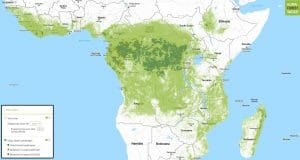
The Congo Rainforest is the second largest tropical rainforest in the world. According to 2020 data by the World Resources Institute (WRI), the Amazon Rainforest makes up 54% of the world’s rainforests by acreage, followed by the Congo Rainforest at 17%, the Australasia Rainforest at 7%, The Sundaland Rainforest at 5%, the Indo-Burma Rainforest at 4%, and others at 13%.
Consequences Of Deforestation
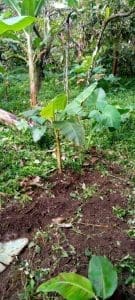
The Congo Basin ecosystem is threatened by excessive timber exploitation, wood gathering, agricultural conversion by plantation, and peasant agroforestry. According to the Food and Agriculture Organization (FAO) of the United Nations, 80% to 90% of forest loss comes from logging without deforesting. FAO defines deforestation as the conversion of forest to others uses like plantations, shifting cultivation, and cropland. Reports indicate that agriculturalists and gatherers that use wood as a fuel source are responsible for the rapid loss of Earth’s forests. A closer examination of the Congo Basin ecosystem in the southwestern forest region of Cameroon shows the rapid and continuous degradation and deforestation of the forest due to cocoa agroforestry.
The Global Cocoa Industry

According to Valuates Reports, the global cocoa industry is estimated to reach US$15.5 billion by 2027, growing at a compound annual growth rate of 4.3% between 2021 and 2027. Cocoa is used in the food and beverage industry through cocoa liquor, cocoa powder, chocolate, and more. It’s also used in the health care industry, the cosmetic industry, the pharmaceutical industry, and the nutraceutical industry. Although about 40% of the world’s cocoa is used to make chocolate, it is estimated that much of the cocoa industry’s growth will come from outside the food and beverage industry. Cocoa has been shown to delay aging, improve healthy skin, and even burn fat. Europe is the largest consumer of cocoa in the world.
Economic Benefits And Environmental Consequences Of Cocoa Agroforestry
According to the FAO, “agroforestry is a collective name for land-use systems and technologies where woody perennials (trees, shrubs, palms, bamboos, etc.) are deliberately used on the same land-management units as agricultural crops and/or animals, in some form of spatial arrangement or temporal sequence. In agroforestry systems there are both ecological and economical interactions between the different components.” As the name implies, agroforestry is an intersection between agriculture and traditional forestry in that native ecosystems can operate alongside or even improve crop and animal farming. By comparison, agriculture and forestry can result in the total annihilation of native ecosystems in favor of manmade industry.
When done right, agroforestry can provide ecological benefits, biodiversity, carbon sequestration, and economic gain. When done wrong or if not monitored closely, it can create tension between native ecosystems and artificial systems that can lead to degraded land and environmental consequences such as higher carbon emissions or endangering native species.
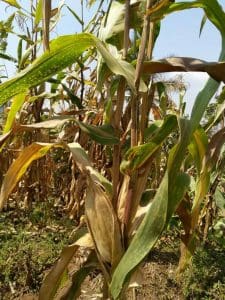
In the 20th century, cocoa agroforestry initiatives were introduced for sustainable management and to reduce poverty for local inhabitants. However, 55% of the cocoa agroforestry in the Congo Basin consists of aging plants that have spent decades in the forest ecosystem. Large portions of cocoa agroforestry are affected by extreme sunshine or solar radiation from the atmosphere due to climate change impacts on the Congo Basin ecosystem. Dry leaves are found in more than 70% of farmland undertaking cocoa agroforestry for forest regeneration.
Today, the majority of the tall trees have been exploited. These tall trees include iroko, sapele, and mahogany, which previously occupied and formed the tree canopy which shaded the forest and protected its biodiversity from solar radiation.
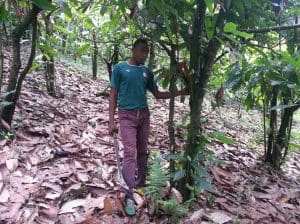
The forest ecosystem is now exposed to direct sunlight, which has led to excessive dry leaves and forest loss. Agroforestry is swiftly causing rapid degradation and desertification. Wood exploitation and gathering is highly fueled by the fermentation and smoking of cocoa beans. Activities related to cocoa smoking entail a regular and constant supply of fuel energy in concrete ovens. The slowness, lengthiness, and constraints associated in the use of solar energy for the cocoa fermentation has accelerated the use of wood energy in agroforestry farmland.
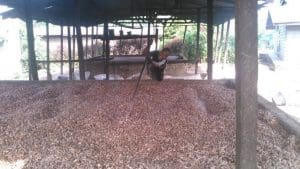
Cocoa Black Pod Disease
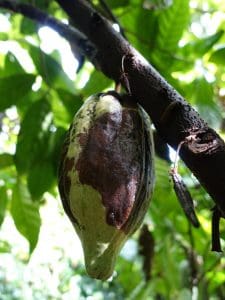
The cultivation of cocoa as a cash crop was meant to increase the economic output of the Congo Basin. However, today’s cocoa agroforestry industry in the Congo Basin is harming, not working alongside, the natural environment.
Native tree and non-timber tree species which create the forest canopy have been deforested in what has come to be known as a “secondary forest,” or the artificial cocoa forest that exists within and around the Congo Basin Rainforest. Deforestation can result from black pod diseases on cocoa trees around native forest tree species. It’s estimated that black pod disease can reduce cocoa yield by up to one third.
Cocoa Agroforestry Does More Harm Than Good For Cameroonians
Too much tree cover can increase black pod diseases and might also delay cocoa fruits from maturity due to limited sunlight. Therefore, famers are incentivized to destroy the natural tall tree canopies, known as the “primary forest,” which is native to the Congo Rainforest. Farmers undertaking agroforestry in the Congo Basin of south Cameroon are extremely poor and lack sustainable farming skills or techniques to support environmental sustainability. Economically speaking, sustainable cocoa agriculture has very little return due to the high cost of production and very low prices. Since sustainable cocoa farming is economically impracticable, farm extensions are accelerating, and new farms are popping up to increase output at the expense of catastrophic deforestation.
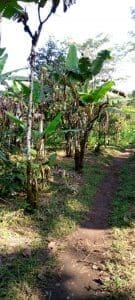
There exists a lack of strong connectivity between local community producers in the forest and foreign cocoa dealers. The prevalence of many buyers into the system and the absence of farming cooperatives have made agroforestry systems unprofitable and detrimental to the foresters. Unsupportive transport networks and the insufficient government incentive to develop the system is driving deforestation in the forest ecosystem.
What’s more, the cocoa agroforestry industry is, for all intents and purposes, a part-time job that has replaced what used to be a constant income stream from illegal poaching. Cocoa agroforestry is a seasonal business that provides farmers with income only during the rainy season. Dependence on cocoa agroforestry as a primary income source has resulted in extreme poverty for local inhabitants that peaks during the dry season. The economic cost of production and cultivation is expensive to the farmer and often more than offset revenue. Therefore, many farmers end up working for a net-zero wage which strains the ability to provide food and necessary healthcare for their families. Healthcare costs are a sizeable expense given the prevalence of malaria in the Congo Basin Rainforest.
Gender Inequality
Cocoa agroforestry is very gender biased and has been known to promote inequality and even violence toward women and girls. Women are restricted from participating in cocoa agroforestry due to restrictions in land ownership, local custom, and tradition. In many ways, social systems prevent rural women from participating in the forest ecosystem. Some rural women are restricted from cultivating food crops in the cocoa farmlands by their parents, which increases food insecurity and poverty in most single-mother homes and widower homes. In addition, women lack modern and alternative sources of energy such as biogas as a fuel source in their households, leaving them dependent on fossil fuels to survive.
The Crossroads
The Congo Basin is at a crossroads. Despite its global growth, the cocoa industry has proved to be environmentally harmful and uneconomical for local inhabitants. In order to increase women’s health and wellness, as well as prevent men from resorting to illegal poaching or other extreme measures for income, the Congo Basin needs alternative revenue streams that don’t come at the expense of plants and animals. Given pervasive poverty, it is understandable that Congo Basin residents would put environmental and social concerns on the backburner in favor of making ends meet. This harsh reality should be acknowledged to avoid overly criticizing those that are pressured to participate in unsustainable practices such as inefficient energy consumption and environmentally harmful industries like cocoa agroforestry.
The Path Forward
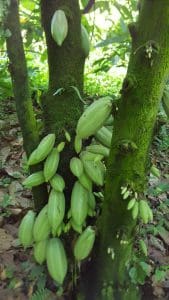
Although cocoa agroforestry, as it exists today, does more harm than good, there are measures that can be taken to reduce the environmental impact of the cocoa industry.
As an alternative to cocoa agroforestry, rural farmers are encouraged to cultivate palm trees and plant agroforestry, which have been found to have lower production costs and can provide an adequate form of subsistence farming. This solution reduces the food insecurity and hunger among the local inhabitants of the congo basin and can also be less harmful to the environment.
To reduce excessive exploitation of wood as a fuel source for cocoa fermentation, there should be a scientific technological system that engages in the use of clean energy for cocoa fermentation. This will reduce the drive of deforestation into the Congo Basin Rainforest.
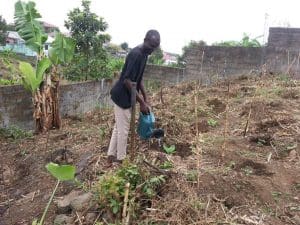
Local enforcement needs to uphold forest policies and implement mechanisms to reduce the illegal penetration and ownership of protected forest land in the Congo Basin.
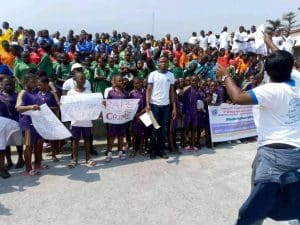
Supporting educational facilities and alternative livelihood in vulnerable forest communities can help to reduce the pressure on forest land for the opening of new farmland for cocoa agroforestry.
Increasing the promotion of traditional cocoa agroforestry practices through the integration of cocoa agroforestry plants with native trees/primary forest. This goal can come to fruition through the planting of native tree species and non-timber tree products among the agroforestry tree crops. This practice will increase the regeneration of the primary forest ecosystem.
Creating a marketing board that monitors and regulates the cocoa price will help limit exploitation.
Developing a modern transportation network for the transportation of goods throughout the country can help to improve quality of life and reduce dependence on the cocoa agroforestry industry.
Get Involved
Jointasdev Research Foundation (Jointasdev) is a non-governmental organization that supports actionable efforts for humanity, forest regeneration, and sustainable development in Central Africa.
The organization focuses on sharing data-backed findings that can help forest communities and research-based solutions at the ground level. Jointasdev is combating for a peaceful, equal, sustainable, and hygienic living environment for all. It is working to create opportunities for women and youth empowerment through improving skills and providing livelihood opportunities, climate issues for a cleaner, sustainable environment to combat climatic changes, waste management for the hygienic and clean surroundings, and sustainable conservation of wildlife, biodiversity, and living ecosystems for tourism and future use.

Jointasdev wants to create a sustainable and clean environment for human, wildlife, and biodiversity, with a peaceful, equal, and empowered rural community for women and youths in the forest region of Cameroon.

The organization’s core objectives include reducing hunger and food insecurity in affected, hard to reach, and vulnerable communities, reducing poverty and hardship in rural Cameroonian communities, increasing health and wellbeing for children and women, increasing education and vocational training for youths in hard to reach and vulnerable communities, promoting gender equality and reducing inequality for women, promoting clean water and sanitation in rural communities, reducing the effect of climate change and global warming in Cameroon and the world, improving the conservation of wildlife, biodiversity and the living ecosystems in the Cameroon portion of the Congo Basin Rainforest, and promoting peace among local inhabitants, rural communities, and other stakeholders in the country.





